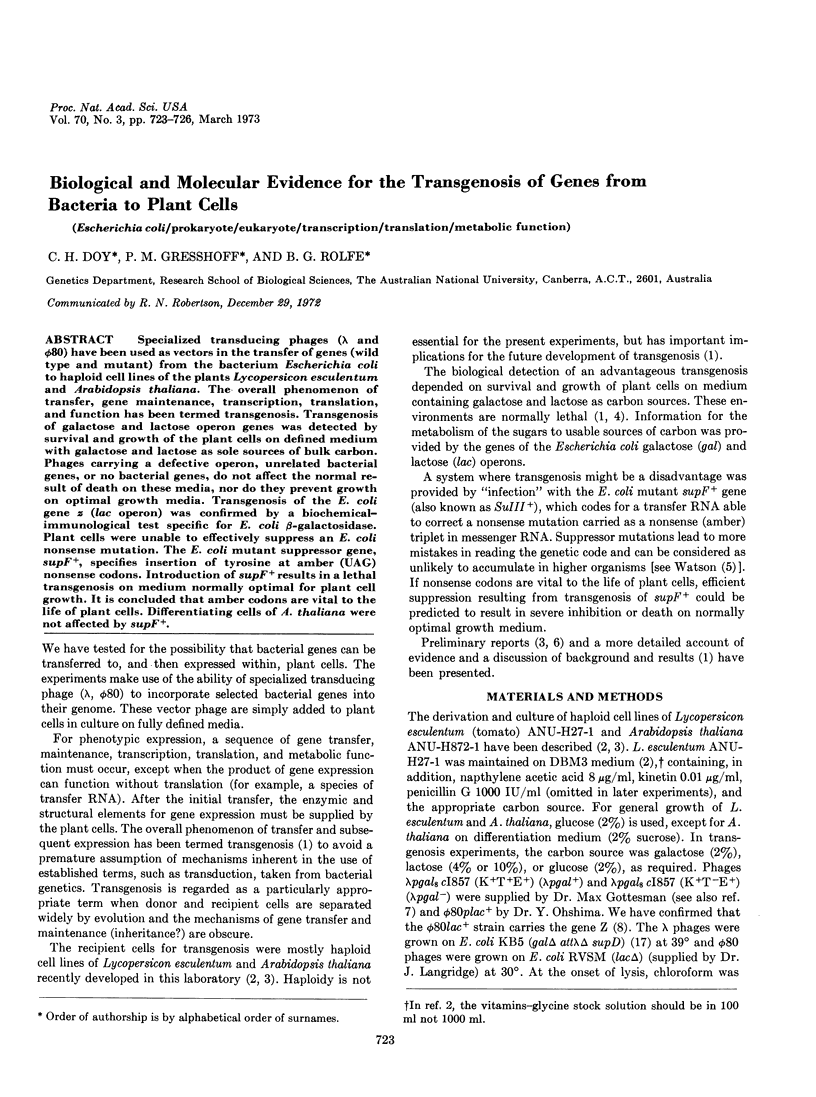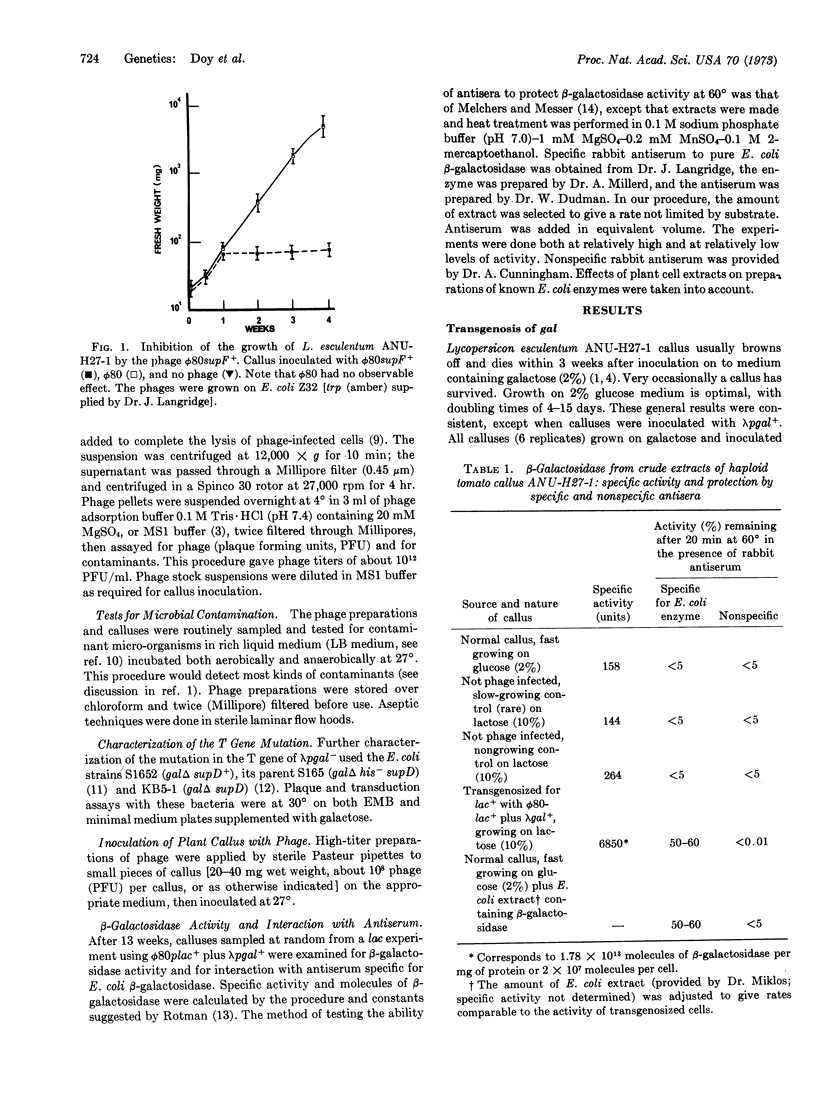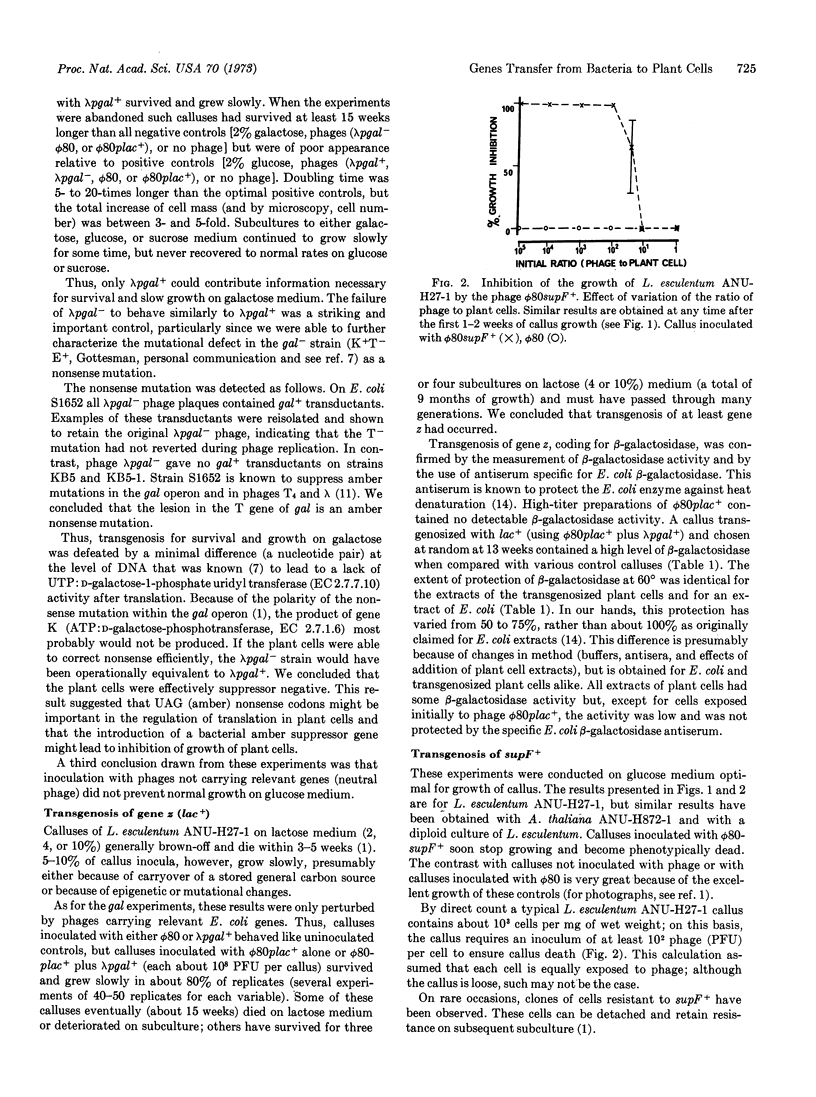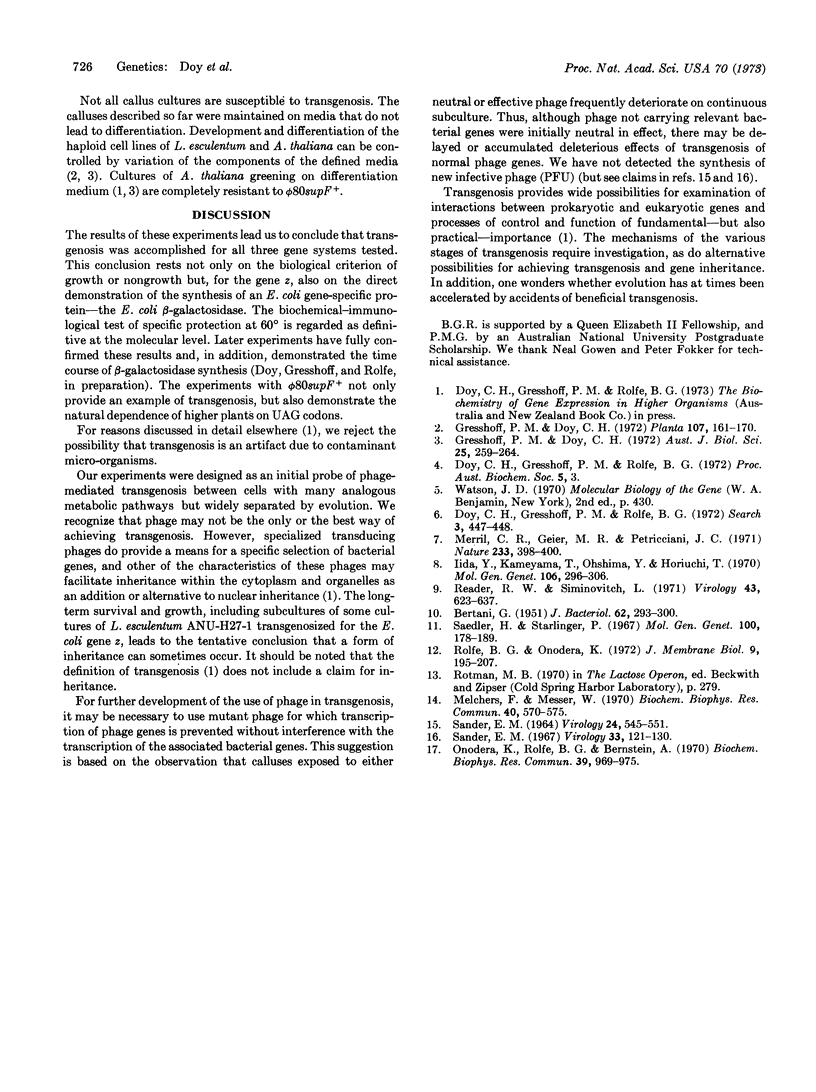Abstract
Specialized transducing phages (λ and ϕ80) have been used as vectors in the transfer of genes (wild type and mutant) from the bacterium Escherichia coli to haploid cell lines of the plants Lycopersicon esculentum and Arabidopsis thaliana. The overall phenomenon of transfer, gene maintenance, transcription, translation, and function has been termed transgenosis. Transgenosis of galactose and lactose operon genes was detected by survival and growth of the plant cells on defined medium with galactose and lactose as sole sources of bulk carbon. Phages carrying a defective operon, unrelated bacterial genes, or no bacterial genes, do not affect the normal result of death on these media, nor do they prevent growth on optimal growth media. Transgenosis of the E. coli gene z (lac operon) was confirmed by a biochemical-immunological test specific for E. coli β-galactosidase. Plant cells were unable to effectively suppress an E. coli nonsense mutation. The E. coli mutant suppressor gene, supF+, specifies insertion of tyrosine at amber (UAG) nonsense codons. Introduction of supF+ results in a lethal transgenosis on medium normally optimal for plant cell growth. It is concluded that amber codons are vital to the life of plant cells. Differentiating cells of A. thaliana were not affected by supF+.
Keywords: Escherichia coli, prokaryote, eukaryote, transcription, translation, metabolic function
Full text
PDF



Selected References
These references are in PubMed. This may not be the complete list of references from this article.
- BERTANI G. Studies on lysogenesis. I. The mode of phage liberation by lysogenic Escherichia coli. J Bacteriol. 1951 Sep;62(3):293–300. doi: 10.1128/jb.62.3.293-300.1951. [DOI] [PMC free article] [PubMed] [Google Scholar]
- Iida Y., Kameyama T., Oshima Y., Horiuchi T. Regulation of the lactose operon in vitro. I. Transcription of the lactose operon. Mol Gen Genet. 1970;106(4):296–306. doi: 10.1007/BF00324047. [DOI] [PubMed] [Google Scholar]
- Melchers F., Messer W. Enhanced stability against heat denaturation of E. coli wild type and mutant beta-galactosidase in the presence of specific antibodies. Biochem Biophys Res Commun. 1970 Aug 11;40(3):570–575. doi: 10.1016/0006-291x(70)90940-x. [DOI] [PubMed] [Google Scholar]
- Merril C. R., Geier M. R., Petricciani J. C. Bacterial virus gene expression in human cells. Nature. 1971 Oct 8;233(5319):398–400. doi: 10.1038/233398a0. [DOI] [PubMed] [Google Scholar]
- Onodera K., Rolfe B., Bernstein A. Demonstration of missing membrane proteins in deletion mutants of E. coli K12. Biochem Biophys Res Commun. 1970 Jun 5;39(5):969–975. doi: 10.1016/0006-291x(70)90419-5. [DOI] [PubMed] [Google Scholar]
- Reader R. W., Siminovitch L. Lysis defective mutants of bacteriophage lambda: on the role of the S function in lysis. Virology. 1971 Mar;43(3):623–637. doi: 10.1016/0042-6822(71)90287-x. [DOI] [PubMed] [Google Scholar]
- Rolfe B., Onodera K. Genes, enzymes and membrane proteins of the nitrate respiration system of Escherichia coli. J Membr Biol. 1972;9(2):195–207. [PubMed] [Google Scholar]
- SANDER E. EVIDENCE OF THE SYNTHESIS OF A DNA PHAGE IN LEAVES OF TOBACCO PLANTS. Virology. 1964 Dec;24:545–551. doi: 10.1016/0042-6822(64)90206-5. [DOI] [PubMed] [Google Scholar]
- Saedler H., Starlinger P. 0 degree mutations in the galactose operon in E. coli. I. Genetic characterization. Mol Gen Genet. 1967;100(2):178–189. doi: 10.1007/BF00333604. [DOI] [PubMed] [Google Scholar]
- Sander E. Alteration of fd phage in tobacco leaves. Virology. 1967 Sep;33(1):121–130. doi: 10.1016/0042-6822(67)90100-6. [DOI] [PubMed] [Google Scholar]


